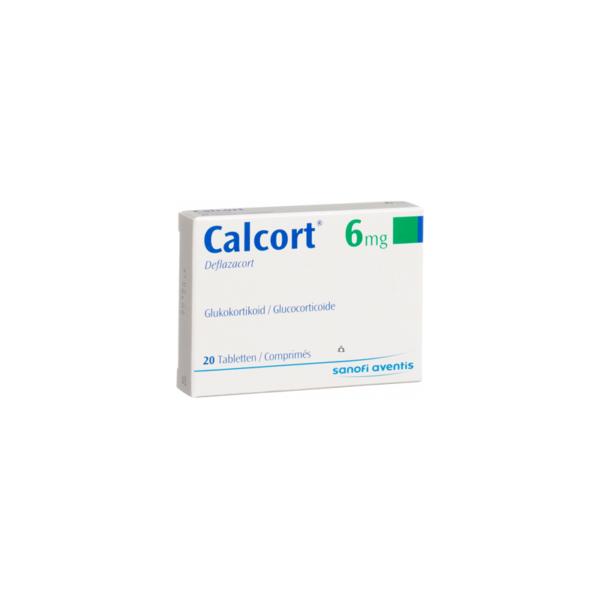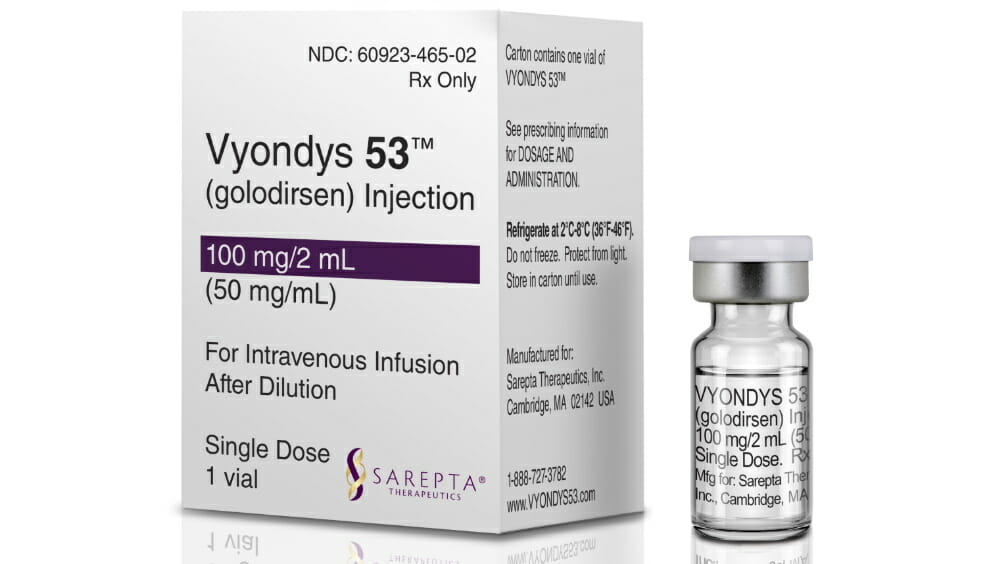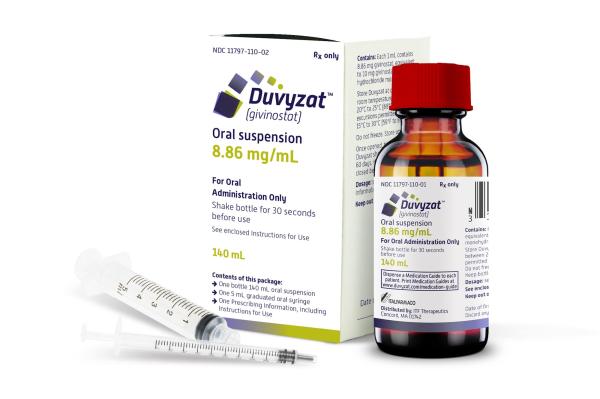New Duchenne Muscular Dystrophy treatments 2024
New Duchenne Muscular Dystrophy Treatments 2024
Duchenne Muscular Dystrophy (DMD) is a genetic disorder characterized by progressive muscle degeneration and weakness. It is caused by an absence of dystrophin, a protein that helps keep muscle cells intact. DMD predominantly affects boys, usually manifesting between three to five years of age. Symptoms include difficulty in walking, standing up, and climbing stairs, as well as a waddling gait and enlarged calf muscles. As the disease progresses, it can lead to serious complications such as scoliosis, cardiomyopathy, and respiratory difficulties.
When considering treatment options for DMD, it is important to consult with healthcare providers who specialize in neuromuscular disorders. While there is currently no cure for DMD, certain medications can help manage symptoms and slow the progression of the disease. Corticosteroids, such as prednisone, are commonly prescribed to improve muscle strength and function. Recently, the FDA has approved drugs like eteplirsen (Exondys 51) and golodirsen (Vyondys 53) for patients with specific genetic mutations. Supportive treatments, including physical therapy, respiratory care, and cardiac monitoring, are also integral to managing the condition and improving quality of life.

Treatment options
| Treatment option | Estimated cost | Efficacy | Eligibility |
|---|---|---|---|
| Corticosteroids (e.g., prednisone, deflazacort) | $1,000 - $2,000 | May slow muscle degeneration | Most patients with DMD |
| Calcort (Deflazacort) | $1,200 - $2,500 | Similar to other corticosteroids | Most patients with DMD |
| Exondys 51 (Eteplirsen) | $20,000 - $30,000 | Produces dystrophin in a small subset of patients | Patients with a confirmed mutation amenable to exon 51 skipping |
| Vyondys 53 (Golodirsen) | $20,000 - $30,000 | Produces dystrophin in a small subset of patients | Patients with a confirmed mutation amenable to exon 53 skipping |
| Viltepso (Viltolarsen) | $20,000 - $30,000 | Produces dystrophin in a small subset of patients | Patients with a confirmed mutation amenable to exon 53 skipping |
| Amondys 45 (Casimersen) | $20,000 - $30,000 | Produces dystrophin in a small subset of patients | Patients with a confirmed mutation amenable to exon 45 skipping |
| Cardiac medications (e.g., ACE inhibitors, beta-blockers) | $50 - $300 | Manages heart-related symptoms | Patients with cardiac involvement |
| Physical therapy | $200 - $800 | Improves mobility and delays contractures | All patients with DMD |
| Experimental gene therapy | Varies widely | Varies; still under investigation | Selected patients in clinical trials |
| Agamree (Poloxamer 188) | Not available | Experimental; efficacy not established | Patients in clinical trials |
Treatments options in detail
Glucocorticoids
One of the mainstays of treatment for Duchenne Muscular Dystrophy (DMD) is the use of glucocorticoids, which include prednisone and deflazacort (brand name Calcort). These medications are known to slow the progression of muscle weakness, improve muscle strength temporarily, and may prolong ambulation by several years. Prednisone is typically dosed at 0.75 mg/kg/day, while deflazacort is dosed at 0.9 mg/kg/day. The choice between these two glucocorticoids may depend on their availability, cost, and side-effect profiles. Long-term use of glucocorticoids is associated with side effects such as weight gain, bone fragility, and growth suppression, among others.
Exon-Skipping Therapies
Exon-skipping therapies are a class of drugs designed to induce the skipping of specific exons during the splicing of the pre-mRNA transcript from the dystrophin gene. This can result in the production of a truncated, yet partially functional, dystrophin protein. Eteplirsen (brand name Exondys 51) was the first FDA-approved drug of this class for DMD patients who have a confirmed mutation amenable to exon 51 skipping. It is administered as a weekly intravenous infusion. Golodirsen (brand name Vyondys 53) and viltolarsen (brand name Viltepso) are similar drugs approved for patients with mutations amenable to exon 53 and exon 53 skipping, respectively.
Another exon-skipping drug, casimersen (brand name Amondys 45), has been approved for DMD patients with a confirmed mutation amenable to exon 45 skipping. These therapies are mutation-specific and thus are only suitable for a subset of DMD patients. The efficacy of exon-skipping therapies in altering the natural course of DMD is still under investigation, and they are generally well-tolerated with few side effects.
Supportive Therapies
Supportive therapies are critical in the management of DMD and include physical therapy, occupational therapy, and respiratory therapy. These interventions aim to maintain function, manage complications, and improve quality of life. Physical therapy focuses on stretching and strengthening exercises to maintain muscle function and prevent contractures. Occupational therapy assists in maintaining independence in daily activities. As the disease progresses, respiratory therapy becomes essential due to the weakening of the respiratory muscles, and interventions may include cough assist devices, nocturnal ventilation, or tracheostomy in advanced stages.
Cardiac Care
Cardiac management is a vital component of DMD treatment due to the high incidence of cardiomyopathy in these patients. Angiotensin-converting enzyme (ACE) inhibitors, beta-blockers, and aldosterone antagonists are commonly used to treat early signs of cardiac dysfunction. Regular monitoring with echocardiograms and cardiac MRIs is recommended to guide treatment.
Bone Health
Bisphosphonates are often prescribed to manage osteoporosis, which can be exacerbated by long-term glucocorticoid use. Calcium and vitamin D supplements are also recommended to support bone health.
Experimental Treatments
Several experimental treatments are under investigation for DMD. These include gene therapy approaches that aim to introduce functional copies of the dystrophin gene into muscle cells. Micro-dystrophin gene therapy trials are ongoing, and while early results are promising, these treatments are not yet FDA-approved.
Other experimental strategies involve the use of utrophin modulation, myostatin inhibition, and stem cell therapy. Utrophin is a protein similar to dystrophin, and increasing its expression in muscle cells might compensate for the lack of dystrophin in DMD. Myostatin inhibitors aim to increase muscle mass and strength, as myostatin is a negative regulator of muscle growth. Stem cell therapy research is exploring the potential of different types of stem cells to regenerate muscle tissue.
Medications for Specific Mutations
Ataluren (brand name Translarna) is a medication designed for DMD patients with a nonsense mutation, which is approximately 10-15% of cases. It promotes read-through of premature stop codons in mRNA, allowing the production of full-length, functional dystrophin protein. Ataluren is approved in some countries outside the United States but is not FDA-approved.
Emerging Treatments
Emerging treatments, not yet approved by the FDA, include CRISPR/Cas9 and other gene-editing technologies that hold the potential to correct mutations at the DNA level. Antisense oligonucleotides (AONs) are also being explored to modify splicing and restore the reading frame of the dystrophin gene.
Investigational Drugs
Agamree is an investigational drug that is not yet approved by the FDA. It is a recombinant adeno-associated virus that delivers a shortened version of the dystrophin gene to muscle cells (micro-dystrophin). This treatment is currently undergoing clinical trials to evaluate its safety and efficacy in DMD patients.
Conclusion
The treatment of DMD is multifaceted and requires a personalized approach based on the patient's specific genetic mutation and clinical presentation. While glucocorticoids remain a cornerstone of treatment, the development of mutation-specific therapies has opened new avenues for potentially altering the disease course. Supportive care remains essential for managing symptoms and preserving quality of life. Ongoing research and clinical trials continue to explore and refine these treatments, with the hope of finding a cure for this challenging disease.
Symptoms
Symptoms of Duchenne Muscular Dystrophy
Duchenne Muscular Dystrophy (DMD) is characterized by progressive muscle weakness and atrophy, which typically begins in early childhood. The most common symptoms of DMD are observed in the proximal muscles, which are the muscles closest to the center of the body, such as those of the hips, pelvic area, thighs, and shoulders. Children with DMD often exhibit a delay in reaching motor milestones such as sitting, standing, and walking. One of the hallmark symptoms of DMD is the Gowers' sign, which is a distinctive manner of rising from the floor. Children with DMD will typically use their hands to "walk" up their legs to stand up due to the lack of strength in their proximal muscles.
As the disease progresses, muscle weakness becomes more pervasive and affects various systems of the body. Calf muscles often become enlarged, a condition known as pseudohypertrophy, which may initially give the appearance of strong leg muscles. However, this is due to fibrofatty infiltration rather than healthy muscle development. Muscle contractures and scoliosis can develop as a result of imbalances in muscle strength around the joints and spine.
Difficulty in walking is another common symptom, with many children with DMD becoming wheelchair-dependent by their early teens. As the leg muscles weaken, children may walk on their toes or the balls of their feet with a slightly waddling gait. Falls become more frequent as the disease progresses, and the ability to self-ambulate decreases.
Cardiac involvement is a significant concern in DMD, as the heart is also a muscle and can be affected by the disease. Cardiomyopathy, which is a disease of the heart muscle that makes it harder for the heart to pump blood to the rest of the body, can develop and may lead to heart failure. Symptoms of cardiac involvement can include shortness of breath, fatigue, and arrhythmias.
Respiratory function is often compromised in the later stages of DMD due to weakness of the muscles involved in breathing. This can lead to an increased risk of respiratory infections, respiratory distress, and the need for ventilatory support. Symptoms related to respiratory compromise can include frequent lung infections, difficulty with coughing, and nighttime hypoventilation, which may manifest as headaches, mental dullness, or difficulty sleeping.
Swallowing difficulties, known as dysphagia, can also occur due to the weakening of the muscles involved in swallowing. This can lead to malnutrition and an increased risk of aspiration, which is when food or liquid is breathed into the airways or lungs.
Cognitive impairment can be associated with DMD, although it is highly variable. Some children with DMD may have learning disabilities or difficulties with attention, verbal memory, and emotional regulation. It is important to note that the degree of cognitive impairment is not necessarily related to the severity of the muscle weakness.
As the disease progresses into adolescence and adulthood, individuals with DMD may experience further complications such as osteoporosis and fractures due to the lack of mobility and the use of glucocorticoids, which are often prescribed to help slow muscle degeneration. The risk of obesity increases due to reduced mobility, which can exacerbate the decline in muscle function and overall health.
Endocrine problems, including delayed puberty and growth abnormalities, can also occur in individuals with DMD. These issues are often related to the use of corticosteroids and the overall impact of chronic illness on the endocrine system.
It is important for individuals with DMD and their caregivers to be aware of these symptoms and to seek regular medical care, as early intervention and management can help to mitigate some of the complications associated with the disease. The management of DMD is multidisciplinary, involving neurologists, cardiologists, pulmonologists, endocrinologists, orthopedic surgeons, physical therapists, and other healthcare professionals to address the various aspects of the disease.
Cure
Current Status of a Cure for Duchenne Muscular Dystrophy
As of the last update on medical research and treatment options, there is no definitive cure for Duchenne Muscular Dystrophy (DMD). DMD is a genetic disorder characterized by progressive muscle degeneration and weakness. It is caused by an absence of dystrophin, a protein that helps keep muscle cells intact. The search for a cure is ongoing and involves a multi-faceted approach including gene therapy, stem cell therapy, and molecular medicine.
Gene Therapy for Duchenne Muscular Dystrophy
Gene therapy is one of the most promising avenues for potentially curing DMD. This approach involves introducing genetic material into a patient's body to replace the defective or missing dystrophin gene. Researchers are exploring various methods, such as using adeno-associated viruses (AAVs) as vectors to deliver the correct gene to muscle cells. While preclinical trials have shown some success in improving muscle function, there are still significant challenges to overcome before gene therapy can be considered a cure, including immune response to the vectors, efficient delivery to all affected muscles, and long-term expression of the introduced genes.
Exon Skipping and Antisense Oligonucleotides
Exon skipping is a therapeutic strategy that uses antisense oligonucleotides (AONs) to modify the splicing of the dystrophin mRNA. The goal is to allow the cellular machinery to 'skip over' faulty exons and produce a shorter but partially functional dystrophin protein. This approach does not cure DMD but can slow the progression of the disease. Drugs like eteplirsen (Exondys 51) and golodirsen (Vyondys 53) are examples of this treatment that have received FDA approval for specific genetic mutations in DMD patients.
CRISPR/Cas9 and Genome Editing
CRISPR/Cas9 technology has revolutionized the field of genetic engineering and offers a potential path towards a cure for DMD. By using this precise genome editing tool, researchers aim to correct mutations at the DNA level in muscle cells. This could restore the production of dystrophin protein. However, this treatment is still in the experimental stages, and there are significant technical and ethical considerations to address before it can be applied as a cure.
Stem Cell Therapy
Stem cell therapy is another area of investigation for curing DMD. The concept is to transplant healthy stem cells that can differentiate into muscle cells into a patient's body, potentially regenerating damaged muscles and restoring dystrophin production. While there have been some advances in understanding how stem cells can be directed to become muscle cells, translating this into a cure for DMD is still a work in progress, with many scientific and practical hurdles to clear.
Supportive Treatments and Management
While the search for a cure continues, there are several treatments available that aim to manage the symptoms of DMD and improve quality of life. Corticosteroids like prednisone and deflazacort can slow muscle degeneration. Cardiac and respiratory care are critical for managing the complications of DMD. Physical therapy, occupational therapy, and the use of assistive devices can help maintain function and mobility for as long as possible.
Recent Advances and Research
Research into a cure for DMD is advancing rapidly, with new discoveries and technologies offering hope. Innovative drug therapies targeting the genetic and molecular basis of the disease are in development. Clinical trials are ongoing for various potential treatments, including novel gene therapies and small molecules that aim to upregulate utrophin, a protein similar to dystrophin. These treatments may offer significant benefits, but as of now, they are not cures.
Challenges in Finding a Cure
Finding a cure for DMD is complicated by several factors. The genetic diversity of mutations causing the disease means that a single treatment may not be effective for all patients. The systemic nature of DMD, affecting all muscles in the body, requires a treatment that can reach and correct muscle cells everywhere, including the heart and diaphragm. Additionally, the body's immune response to treatment, especially in gene therapy, poses a significant challenge.
Conclusion on the Cure for Duchenne Muscular Dystrophy
In conclusion, while there is currently no cure for Duchenne Muscular Dystrophy, there is a concerted effort in the scientific and medical community to find one. Advances in gene therapy, exon skipping, genome editing, and stem cell therapy provide hope for the future. However, these potential cures are still in the research or clinical trial phases and are not yet widely available. For now, treatment focuses on managing symptoms, slowing disease progression, and maintaining quality of life for those affected by DMD.
Access Duchenne Muscular Dystrophy medicines today
If Duchenne Muscular Dystrophy medicines are not approved or available in your country (e.g. due to supply issues), you can access them via Everyone.org.
How Everyone.org works

Make an enquiry
Choose the medicine you want to access, answer a couple of questions, and upload your prescription to speed things up. We’ll get back to you within 24 hours.


Make an enquiry
Choose the medicine you want to access, answer a couple of questions, and upload your prescription to speed things up. We’ll get back to you within 24 hours.


Breeze through the paperwork
We'll guide you through the required documents for importing unapproved medicine, ensuring you have all the necessary information.


Get a personalized quote
We’ll prepare a quote for you, including medicine costs and any shipping, administrative, or import fees that may apply.


Receive your medicine
Accept the quote and we’ll handle the rest - sourcing and safely delivering your medicine.

Some text on this page has been automatically generated. Speak to your physician before you start a new treatment or medication.
Let's talk
If you have any questions, call us or send us a message through WhatsApp or email:
Contact us









